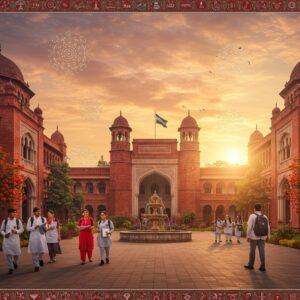Discovering the Vindhya and Satpura Ranges of India

The Vindhya and Satpura ranges stand as prominent mountain ranges in central India, each possessing distinct geological characteristics and cultural significance. Let’s delve into a comprehensive comparison of these ranges, exploring their geography, history, and ecological importance.
Geographic Features of the Vindhya Range
The Vindhya Range, also known as Vindhyachal, isn’t a continuous chain of mountains, but rather a series of discontinuous hill ranges, highlands, and plateau escarpments located in west-central India. Primarily running east-west, it acts as a natural watershed, separating the Ganga river system from the river systems of southern India. The highest peak, Sadbhavna Shikhar, reaches an elevation of 752 meters. The range features dry deciduous forests supporting a variety of flora and fauna.
The climate is generally dry, characterized by hot summers and mild winters. The soil composition varies, with rocky and sandy soils being prevalent, influencing the types of crops cultivated in the region. The Vindhya Range has historically acted as a natural barrier, shaping human settlement and travel routes.
Geographic Features of the Satpura Range
The Satpura Range, formerly known as the Seeonee Hills, stretches parallel to the Vindhya Range to the north. It extends from eastern Gujarat eastward through Maharashtra, Madhya Pradesh, and into Chhattisgarh. Comprising a series of seven mountains, the Satpura Range, along with the Vindhya Range, divides the Indian subcontinent into two distinct regions: the Indo-Gangetic plain of northern India and the Deccan Plateau of the south. Dhupgarh, the highest peak, stands at 1,350 meters. The range is renowned for its rich biodiversity and dense forests.
The climate in the Satpura Range is more diverse than that of the Vindhya Range, experiencing cooler temperatures due to its higher elevations. The soil is fertile, supporting a broader range of agricultural activities. The Satpura Range plays a vital role in biodiversity conservation and eco-tourism, attracting nature enthusiasts.
Historical and Cultural Significance
Both the Vindhya and Satpura ranges hold profound historical and cultural importance. The Vindhya Range finds mention in ancient Indian texts and mythology, often revered as a sacred boundary. The Satpura Range also figures in local legends and historical narratives.
Numerous historically significant sites are scattered across both ranges, having influenced the settlement patterns of ancient civilizations. These ranges served as strategic defensive positions throughout various historical periods. Cultural practices and traditions remain deeply intertwined with these landscapes, continuing to hold significance in contemporary society.
Ecological Importance
The Vindhya and Satpura ranges are crucial for the ecological well-being of the region. The Vindhya Range harbors unique ecosystems, many of which face conservation challenges. The Satpura Range boasts rich biodiversity, including several endangered species.
Human activities have impacted the ecological balance of both ranges. Ongoing conservation initiatives strive to protect these vital natural habitats. These ranges provide essential resources such as water, timber, and medicinal plants.
The Narmada River: Lifeline Between the Ranges
The Narmada River flows through the depression between the Vindhya and Satpura ranges, serving as a natural boundary. Originating at Amarkantak in Madhya Pradesh, it flows westward, supporting agriculture and local economies along its course. The Narmada holds significant cultural and religious importance, revered as a sacred river in Hinduism.
The river significantly influences the biodiversity of both mountain ranges, providing water to diverse ecosystems. Responsible river management and conservation efforts are crucial to preserving this vital lifeline.
FAQs on Vindhya Range vs. Satpura Range
What distinguishes the Vindhya and Satpura ranges? The Vindhya and Satpura Ranges, while geographically close, have distinct characteristics. The Vindhya is a discontinuous series of hills and plateaus, acting as a watershed between north and south India. The Satpura, a more continuous range with higher peaks, is known for its biodiversity and dense forests.
What is the significance of the Narmada River in relation to these ranges? The Narmada River flows between the Vindhya and Satpura ranges, shaping their landscapes and ecosystems. It also holds cultural and religious significance, considered sacred in Hinduism.
Conclusion
The Vindhya and Satpura ranges are invaluable treasures of central India. Their unique geographical features, rich history, and ecological significance make them vital to the region. Understanding these ranges provides insights into India’s natural beauty and cultural heritage. Preserving these landscapes is essential to ensure future generations can appreciate their majesty.
Explore our collection of Bel malas, Tulsi malas, and other pooja items at poojn.in, perfect for rituals and ceremonies associated with nature and these sacred mountain ranges.
You can delve deeper into the cultural significance and rituals associated with these ranges by visiting our blog posts on Maihar’s Hidden Gems and Saptashrungi Devi.


